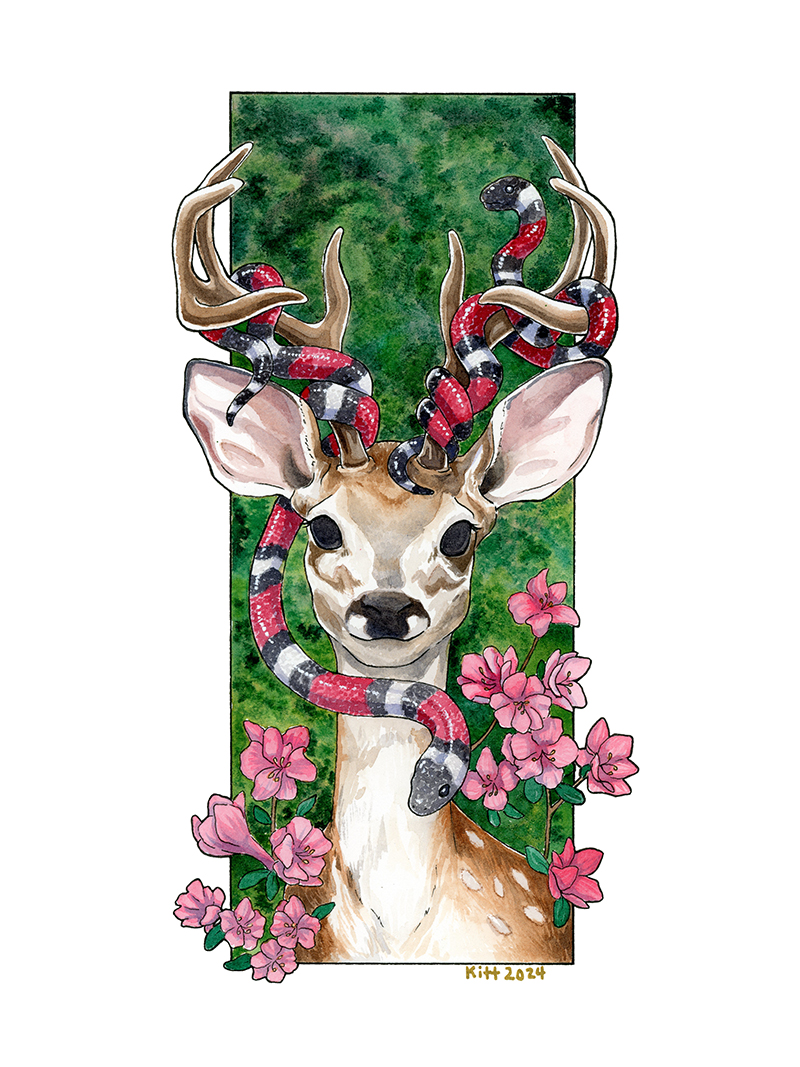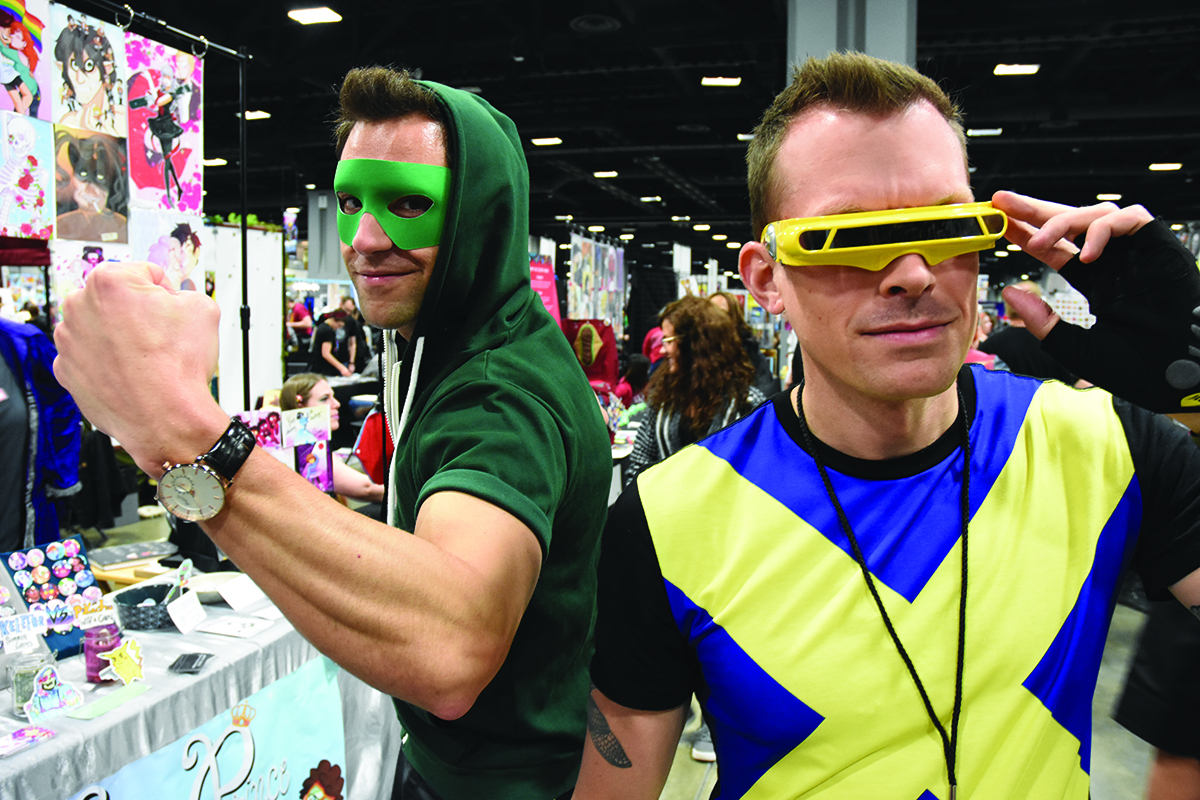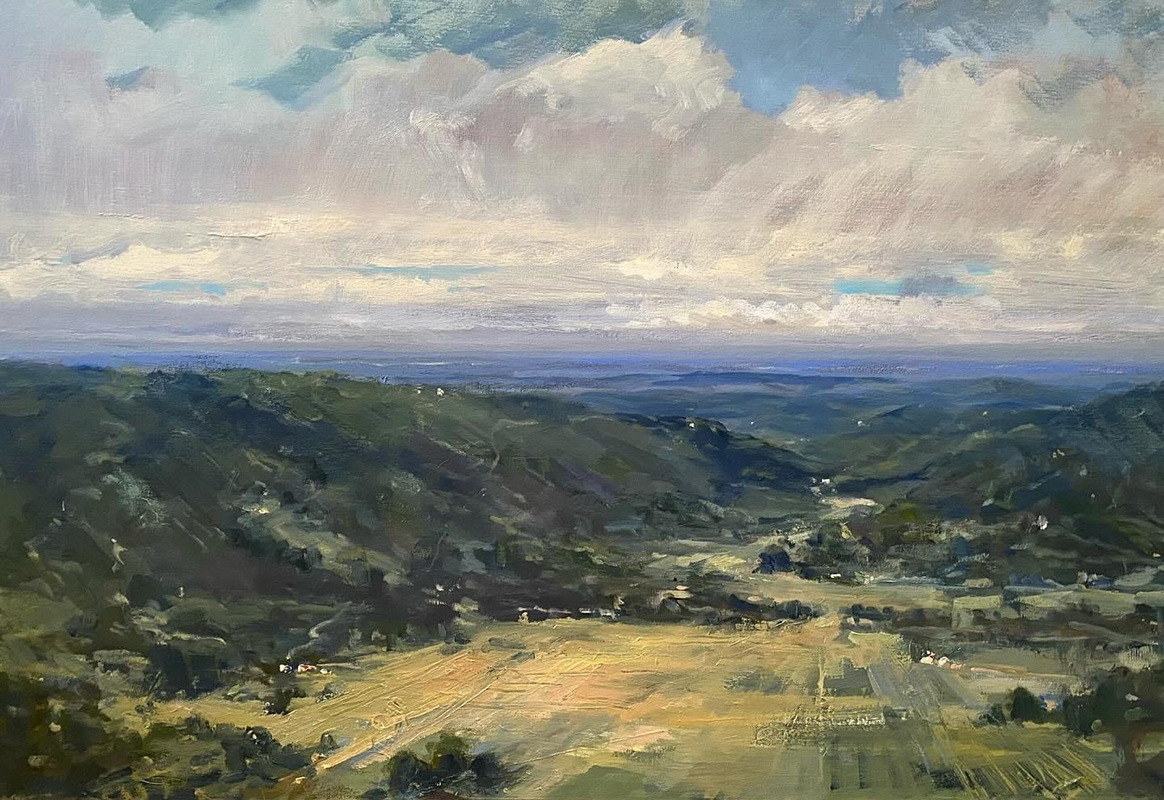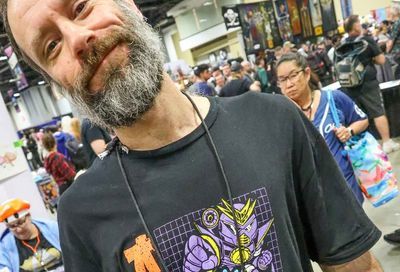Fire Starter: Renwick’s Burning Man exhibit captures the magic of the desert festival
In its dazzling, all-encompassing Burning Man exhibit, The Renwick Gallery showcases an event that encourages participants to be themselves

“You can call Burning Man an Alice in Wonderland, a Star Wars, a Hogwarts-type experience. In a nutshell, it’s a place like no other, where if you dare to, the real you comes out.”
Frank Rettig would know. The 56-year-old has attended the annual event, held in Nevada’s Black Rock Desert around Labor Day, seven times.
To call Burning Man a “festival” doesn’t effectively communicate the entirety of the experience. Each year, about 70,000 people create a vast, temporary city in the desert, fully immersing themselves in art, dance, and various social activities while surviving an often harsh, arid environment. While some sleep in RVs, others choose to sleep in tents or under the stars. Transportation is limited, and there are no roads, meaning most people travel via bicycle or on foot to get around the city, which is about 5 miles in length and shaped like a giant C.
At the end of the week, several wooden art structures decorating the outermost parts of the city — known as “Open Playa” — are set ablaze, including the titular “Man.” Afterwards, the entire city vanishes, thanks to an aggressive “Leave No Trace” policy, as festival-goers erase all signs of their presence, returning the Black Rock Desert to its natural state.

At its core, Burning Man is based on ten main principles: radical inclusion, self-reliance, self-expression, community cooperation, civic responsibility, gifting, decommodification, participation, immediacy, and leaving no trace. Attendees are expected to throw themselves fully into the experience, often “going with the flow” rather than adhering to a strict schedule.
“When you arrive at Burning Man, you’re given a little booklet that has the events for every major camp published,” says Rettig, who lives in Washington, D.C. “You can basically plan your days, what you’re going to do in the morning or afternoon or evening, and where you want to go. But invariably, what you actually end up doing is just living by the moment.
“A burner, fundamentally, has got the same type of DNA as a scuba diver…. They’re individuals who like to push the envelope and experience the wonders of nature. Burning Man goes further by requiring you to participate and to become the expression, thus the art. So ‘tourists’ are not recommended, where you just sit by and observe. You can do that, but the art comes more to life when you throw yourself into it and become part of it.”
It’s that same immersive experience that Nora Atkinson was aiming to imitate when she curated the show No Spectators: The Art of Burning Man at the Smithsonian’s Renwick Gallery, where it will run through January, 2019.

“I originally presented this Burning Man show as a single floor show but I kind of knew there was really no way that it would ever work confined to a single floor,” says Atkinson, the Lloyd Herman Curator of Craft at Renwick. “The Renwick is the perfect jewel box-sized museum to have a whole museum show with this kind of immersive environment.”
As visitors enter the museum and turn left on the ground floor, they’ll encounter a room dedicated to the concepts behind Burning Man, followed by spaces focusing on the people, sights, and sounds of the event, complete with hybrid art installation vehicles, signs, costumes, videos, paintings, and photographs. In the center of the first floor, visitors can even hook themselves into an interactive machine that takes them through a virtual reality tour of the Black Rock Desert.
Upstairs, there are more art structures, collections of items from past celebrations, articles about Burning Man’s origins, and visual presentations. In one room, mushroom-shaped mechanical structures, lit with multi-colored LEDs, groan as they shift shape. In another, people recline on beanbag chairs and watch as a computer-generated light show takes place on a star-shaped screen. A Gamelatron produces a series of musical tones in a room containing a miniature version of the event’s signature structure, and still photographs and videos of past “burns” run on a continuous loop on television screens that line the upstairs hallway.

“When you look at a map of the city at Burning Man, it’s like a clock,” notes Atkinson. “It goes from 10 o’clock to 2. About two-thirds of the circle is all city streets. The other part — the Man — is in the very center. And behind the man is the temple.
“The rest of what’s out there is called Open Playa. So that’s where most of the sculptures, the large-scale installations, they place them out in Open Playa all around. That was my version of Open Playa, upstairs in the museum. So when you come to the top of the steps, the Man is at one end and the temple is at the other. I wanted to evoke that immersive experience. And then punctuate the rest of the upstairs with the other things you would come upon in Open Playa.”
The exhibit also features six sculptures housed outside the Renwick and dispersed throughout the area surrounding the White House, including Maya’s Mind, a structure of a woman’s face, Ursa Major, a bear raised up on its hind legs, and an untitled piece by Jack Champion featuring two large black crows.
Many past attendees describe the clothing worn at Burning Man as evoking a post-apocalyptic Mad Max-type aesthetic or a Bohemian sense of style, which the Renwick captures in a handful of costumes displayed. Many of the clothing pieces are colorful, detailed, gender non-specific, and heavily decorated. One costume features a corset-type piece that wraps around a colorful robe made of heavy material with a long train, while another, Tyler Fuqua’s “Thorax, Ambassador to the Insects,” is in the shape of an insect, complete with light-up wings and an antenna-shaped headpiece. Other costumes incorporate important accessories, such as “Playa boots,” containers for water, goggles, masks, or bandanas to protect against dust storms, and glowsticks or other light sources that attendees use to navigate Black Rock City at night.

“One of the things that struck me when I was at Burning Man,” says Atkinson, “was that women get to play with fashion all the time. Men don’t. It’s black, white, gray, brown — that’s what you see in a men’s department store. For men to be able to experiment with colorful, detailed costumes, to go out there and defy gender stereotypes, and be that free — I wanted that to come out [in the exhibit].”
Because of a commitment to “radical inclusion” — in keeping with its founding principles, as well as its roots in the San Francisco counterculture of the 1970s and 1980s — the LGBTQ community never feels out of place at Burning Man, where participants are allowed to eschew gender norms and traditional stereotypes. Experimentation — in fashion, in frolic, in play, and also sexually — is highly encouraged.
“There are probably more non-heteronormative people that go to Burning Man who might identify across the queer-bisexual spectrum, or as non-binary or trans,” says 37-year-old D.C. resident JR “Nexus” Russ, who has attended the past five events. “It’s not uncommon for you to see people of any sexuality being comfortable with other people, regardless of how they identify. There’s no pretense and there’s no barrier.”
Russ notes that, just like any other city of 70,000, Black Rock offers a plethora of activities that cater to a variety of tastes. They include erotic art classes, BDSM-training courses, cooking activities, dance parties, foam parties, family-friendly activities for those attending with children, and even a naked pub crawl, where people bike from watering hole to watering hole in the buff as onlookers cheer them on.

“If you wanted to go there and do yoga all week, you could,” he says. “They even have like a whole kids camp which families camp at. They have a whole ‘anonymous’ camp, where they have AA and NA meetings all week for people who don’t necessarily party. There are people who only do things during the day. I’ve done both: I’ve been up all day, and spent a nice, quiet night sleeping, and then I’ve also gone out all night.”
Fully immersing yourself in Burning Man requires letting go of all inhibitions, judgments, or concerns about appearance. “My main bit of advice is don’t be afraid of playing,” says Russ. “I think sometimes adults forget the joy of just being able to play and be silly, whether it’s interacting with some crazy art or trying on different costumes at a costume camp. And I think sometimes people who have never been before have that fear of looking silly, but there’s nothing silly if that’s how you feel and what you want to do.”
For her part, Atkinson hopes the exhibit exposes people, particularly those on the East Coast, to an event that is routinely misunderstood.
“People want to put it into a box, and so a lot of people think that it is a music festival,” she says. “They’ll say, ‘What are the headlining bands?’ But it’s not a music festival, there are no headlining bands. Burning Man is about bringing your wildest dreams, just being free. If you want to go have a huge Slinky race on a huge staircase to nowhere, you can go do that. If you want to go hang out in a hammock somewhere, you can do that.

“Most of the articles that come out about Burning Man are all about some kind of salacious activities. Celebrities out there doing this or that, sex and drugs or whatever in the desert. I wanted with this exhibition to really bring out one of the most beautiful things, the heart of Burner culture, which is the art.”
Art is ever-present on the Open Playa, whether it’s the wooden structures that are burned at week’s end, sculptures or buildings that attendees can walk through or on top of, or metal and mechanical structures with lights or special effects. There are even some forms of conceptual art designed to provoke a certain response from the viewer.
“One interesting thing I saw a couple of years ago that made me laugh out loud was about as far as you could get from the established city, out there near the trash fence at the edge of the Burning Man area,” recalls D.C. resident Jim Landé, 51, a veteran of four Burning Mans. “It was what looked like a radio tower with a sign that said something along the lines of ‘WiFi available here.’ As people were bicycling up to see what this was, they were all flipping out their phones to see if they could get a signal. But there was no WiFi there. The point of the art was to remind people that they could be manipulated to do something irresistible, which is to react like Pavlovian dogs to the notion there was WiFi.”
As veterans of Burning Man know, the event’s location in the desert leaves a film of white alkaline dust over their bodies, clothing, and personal belongings, particularly following dust storms that occasionally rip through the city. When he attended the Renwick exhibit, Landé looked closely for the tell-tale traces of dust to reassure that the items showcased were authentic.
“I remember one day, I was bicycling around, checking things out with some other friends,” he recalls. “It was hot, sunny. We were all shirtless, not wearing a lot of clothes, and we’re not even far from the center of camp when one of those infamous dust storms came on down. Very, very quickly, it became so dim and dusty that you couldn’t see three feet in front of you, and all of a sudden, it was really cold. We couldn’t see where we were. There was no way of getting home. So you just have to hunker down, wherever you are with your bicycles.

“As we were hunkered down, we heard this music, the sound of techno, or EDM nearby, and we made our way toward the sound. When we reached it, in the middle of this raging dust storm, all these people were just dancing around, because there was nothing else they could do.”
Landé feels that the Renwick’s exhibit serves as a perfect complement to the sights and sounds he experienced during his time in the desert.
“I really enjoyed how the curators contextualized some of the art — the costumes, the wearable art, as well as the sculptural art,” he says. “I love how they showed some of the qualities of these objects that I wouldn’t have known or recognized simply from seeing them and absorbing them on the desert. I definitely recommend the show to everybody. Take a few hours to just soak it up.”
No Spectators: The Art of Burning Man, runs through January 21, 2019 at the Smithsonian’s Renwick Gallery, 1661 Pennsylvania Ave. NW. Open daily from 10 a.m. to 5:30 p.m. Admission is free. For more information, visit americanart.si.edu/exhibitions/burning-man.
This year’s Burning Man runs from Aug. 26 to Sept. 3, 2018 in Nevada’s Black Rock Desert, 100 miles north of Reno. For tickets or more information, visit burningman.org.



Support Metro Weekly’s Journalism
These are challenging times for news organizations. And yet it’s crucial we stay active and provide vital resources and information to both our local readers and the world. So won’t you please take a moment and consider supporting Metro Weekly with a membership? For as little as $5 a month, you can help ensure Metro Weekly magazine and MetroWeekly.com remain free, viable resources as we provide the best, most diverse, culturally-resonant LGBTQ coverage in both the D.C. region and around the world. Memberships come with exclusive perks and discounts, your own personal digital delivery of each week’s magazine (and an archive), access to our Member's Lounge when it launches this fall, and exclusive members-only items like Metro Weekly Membership Mugs and Tote Bags! Check out all our membership levels here and please join us today!

























You must be logged in to post a comment.